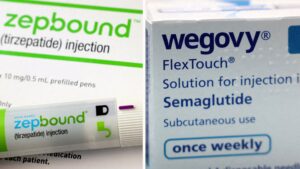The Surging Demand for Weight Loss Drugs: What You Need to Know
At Extreme Investor Network, we understand that the world of pharmaceuticals can be both exciting and daunting. With ongoing developments in the healthcare sector, one area that has captured significant attention recently is the skyrocketing demand for weight loss medications. As we venture into 2024, new data reveals a remarkable surge in prescription fills for these blockbuster drugs, highlighting both consumer interest and the challenges that lie ahead.
A Thriving Market for Weight Loss Medications
According to recent findings from GoodRx, prescription fills for popular weight loss drugs have more than doubled in 2024. This surge persists despite limited insurance coverage options and high out-of-pocket expenses. Among the frontrunners in this category are Wegovy by Novo Nordisk and Zepbound by Eli Lilly, both of which fall under the GLP-1 and GIP agonists class of medications. These drugs work by mimicking gut hormones, effectively helping to suppress appetite and control blood sugar levels.
Eye-Popping Numbers
The statistics tell a compelling story: since the start of 2024, Wegovy has seen an increase of over 100% in prescription fills, while Zepbound has experienced an astonishing leap of about 300%. Notably, Zepbound is fresh on the market, having been approved in November 2023, while Wegovy has been available since 2021. With list prices around $1,000 per month, the appetite for these treatments raises questions about affordability and accessibility for the average consumer.
Insurance: A Major Hurdle
The data also highlights a glaring issue with insurance coverage. Just 9% of those with commercial insurance enjoy unrestricted coverage for Zepbound, while 14% have the same for Wegovy. Unfortunately, as GoodRx data shows, many patients face restrictive policies that can complicate their access to necessary treatments.
Tori Marsh, a director of research at GoodRx, explains, “Insurance is just not the stopgap that it used to be.” This reality forces many patients to foot high out-of-pocket bills, with the average insured person paying over $2,500 per year in copays for Zepbound alone. According to GoodRx, patients spent an average of $231 out of pocket for a monthly prescription of Zepbound over the past year—an amount that can quickly add up.
The Cost of Inaction
A staggering insight from GoodRx reveals that Americans have overspent by a shocking $200 million because they chose to pay full retail prices instead of utilizing savings options, such as drug coupons available through GoodRx or assistance programs from drug manufacturers. For those without insurance, leveraging these coupon systems can lead to a monthly saving average of $250, amounting to $3,000 annually.
A Changing Landscape
It’s crucial to keep in mind that the coverage of weight loss medications is uneven. A recent survey showed that less than 20% of large employers provide coverage for these treatments. Furthermore, Medicare currently does not cover weight loss drugs unless prescribed for another health condition—a significant barrier for many seeking these therapies.
However, change may be on the horizon. In November, the Biden administration proposed a new rule that could allow Medicare and Medicaid to cover weight loss drugs for patients with obesity. If enacted by the incoming administration, this policy shift could dramatically expand access to these much-needed treatments.
Why Extreme Investor Network?
At Extreme Investor Network, we strive to keep you informed about critical shifts in the market landscape, particularly within the pharmaceutical sector. The surge in demand for weight loss medications presents both investment opportunities and challenges, and we are committed to providing you with insights and actionable strategies to navigate this evolving space.
As we monitor these trends, we encourage our readers to stay engaged with the developments in healthcare that can impact your portfolio choices. By adopting a well-informed approach to investments in the healthcare sector, you can position yourself for success—now and in the future.
Stay tuned for more insights and trends from Extreme Investor Network, where your investment knowledge is our priority!

